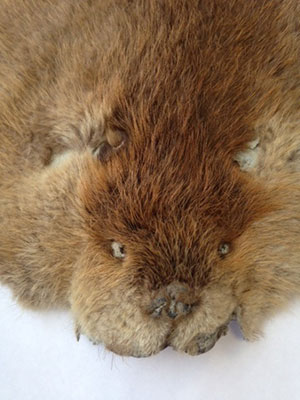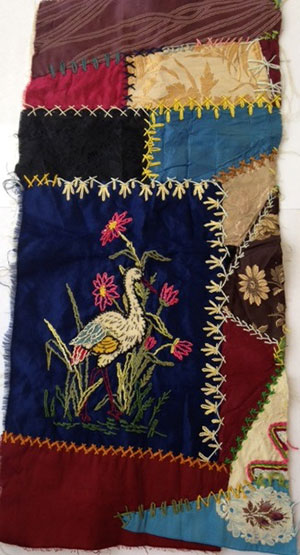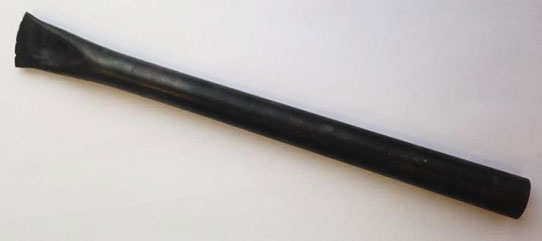One of the cool things about my job is I get to put real objects in people’s hands. When objects are donated to a museum they generally go through a basic process. A committee considers a number of things including: What is known about the history of this item? Do we know who created it or who used it? How does this relate to what we already have in our collections? Do we need another one? Is there a clear connection to North Dakota history? Is there a clear chain of legal ownership established? This chain of ownership is known as provenance in the museum world. If we can’t establish provenance, we usually can’t accept an object as a donation.

Beaver pelt from the Fur Trade SEND trunk.

Piece of a hand-stitched crazy quilt from the Women’s Work SEND trunk.
So what happens to items that are not accepted in the official museum collection? There are a number of things a donor might decide to do at this point—keep the item, sell it, throw it away. We usually recommend other museums that might be interested in particular items, and sometimes we ask to add the objects to our Education Collection. While an official museum collection is handled in a very purposeful manner, objects in an education collection are eventually used up. Objects that are part of the official museum proper are not touched unless they need to be, such as an inventory or being placed in an exhibit. The goal is to preserve these objects forever. An education collection is different in that while we do try to handle things carefully, we know that it is unlikely these items will be preserved forever. The objects very well could be used up to the point they are broken and eventually thrown away. Why would we allow this to happen? An education collection gives us objects we can put into people’s hands. Visitors can examine quilt squares to see the difference between machine and hand stitching. They can put on a pair of wire rim eyeglasses. They can pick up the scent of cloves that can still be detected in a metal spice container. They can write on a slate board and feel the fur on a beaver pelt. There is nothing more fun than explaining to a group of 4th graders that the coprolite they are holding is real, fossilized, dinosaur poo.
One way of getting all these educational objects into people’s hands is to ship them out to every corner of the state in big boxes we call SEND trunks. The Suitcase Exhibits of North Dakota (or SEND) program is geared to the 4th grade classroom. However, we have all kinds of other organizations that use SEND trunks including other museums, nursing homes, Boy Scouts, and homeschool groups. We retire and add new topics periodically, with about 18 to 20 topics available most of the time. If your school or organization is interested in getting your hands on history, you can order a trunk by submitting the form available at this link: http://history.nd.gov/pdf/SENDApplForm2013.pdf or e-mailing me at dlstuckle@nd.gov.

Gun Barrel fashioned into a scraper to clean the flesh off of animal hides before tanning. From the Fur Trade SEND Trunk.

